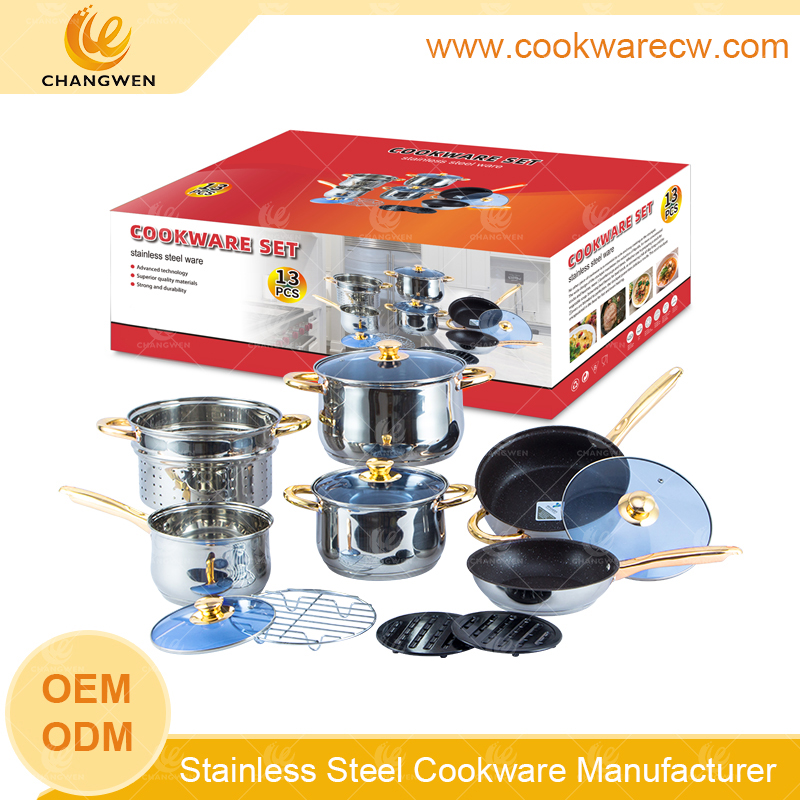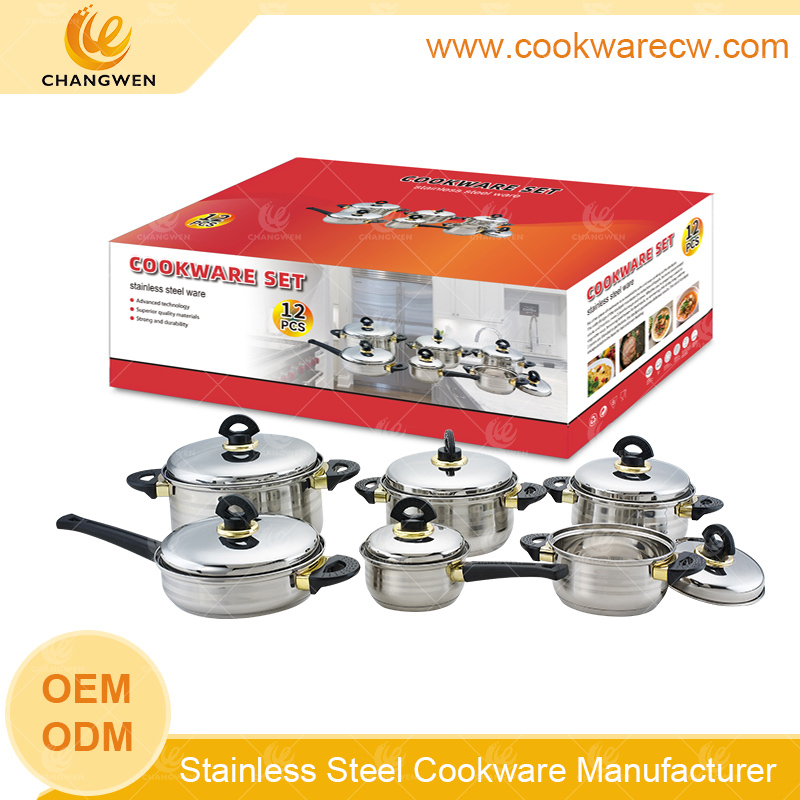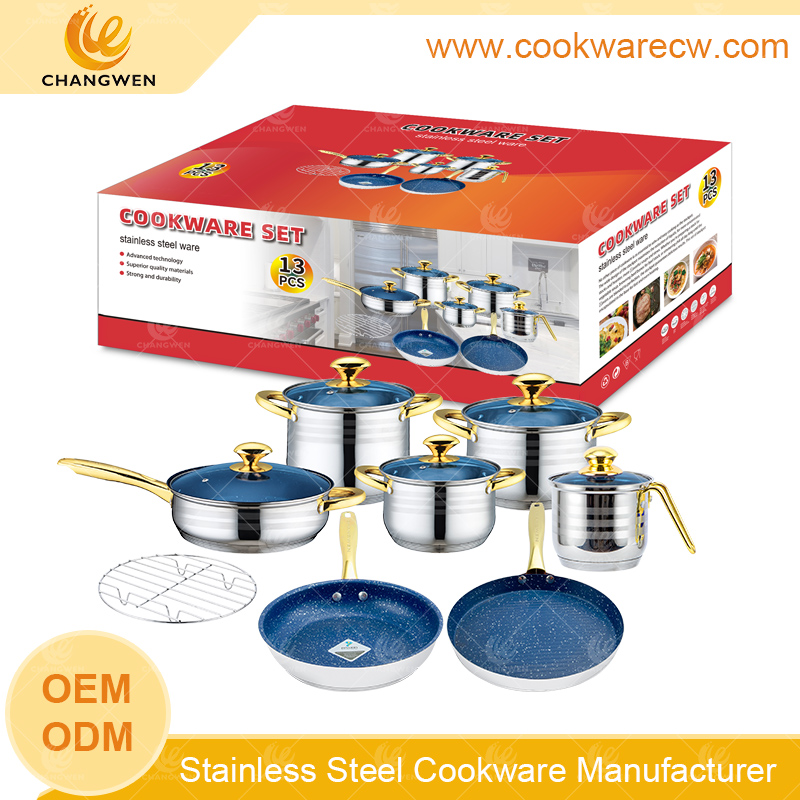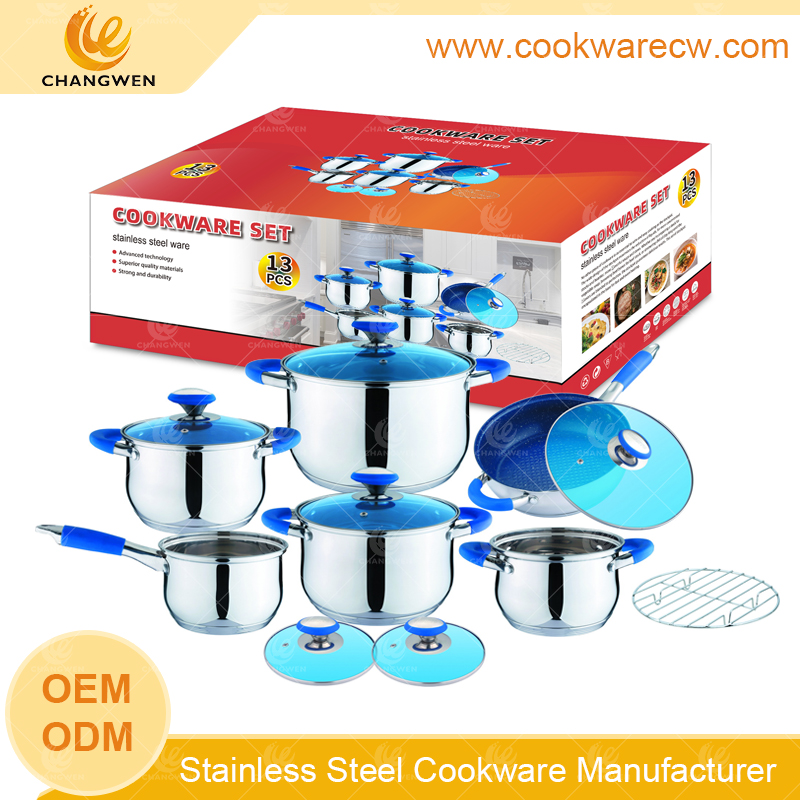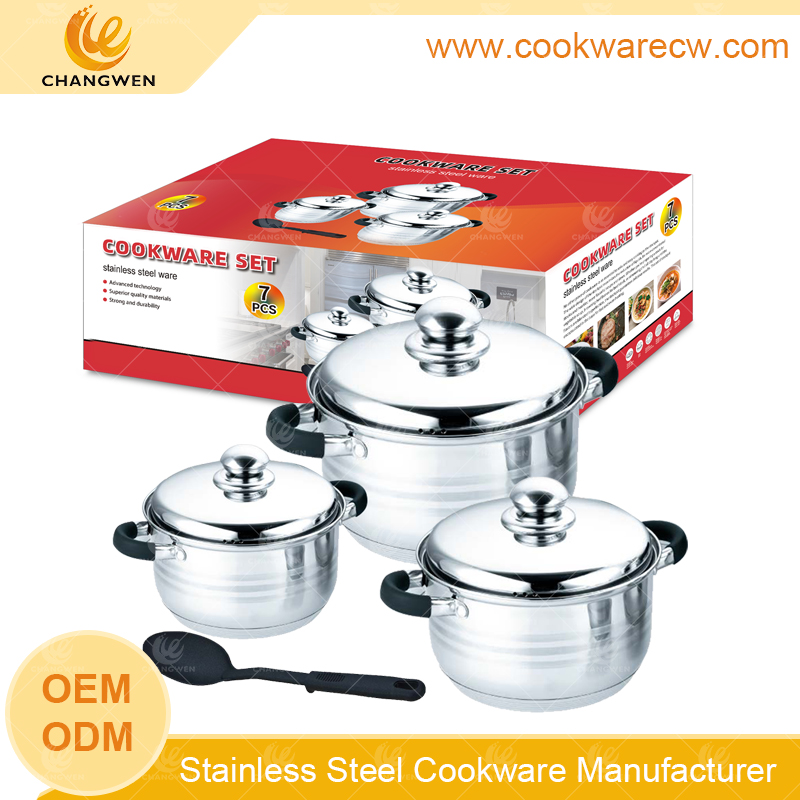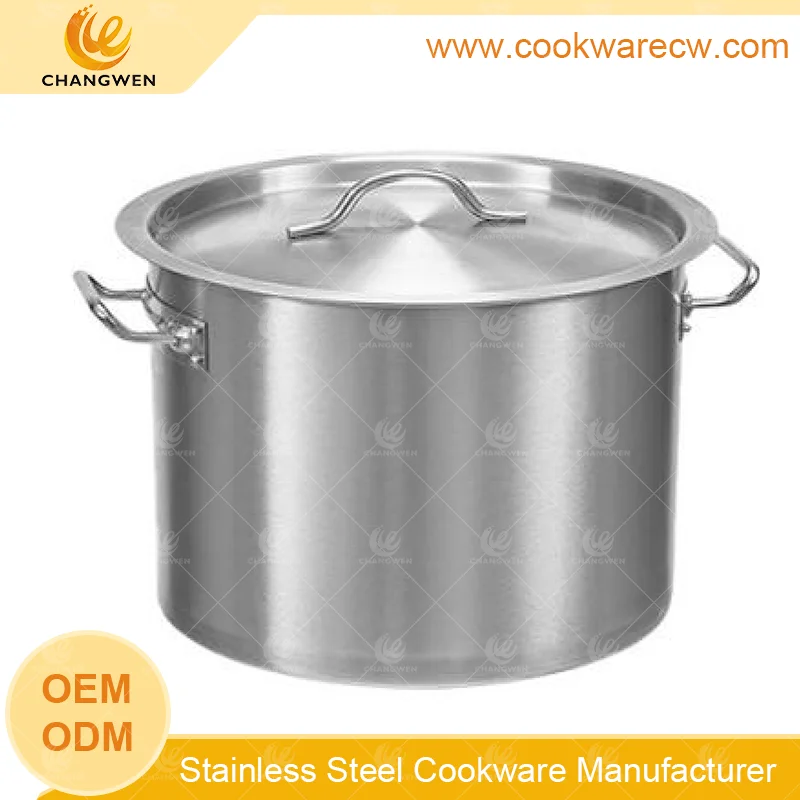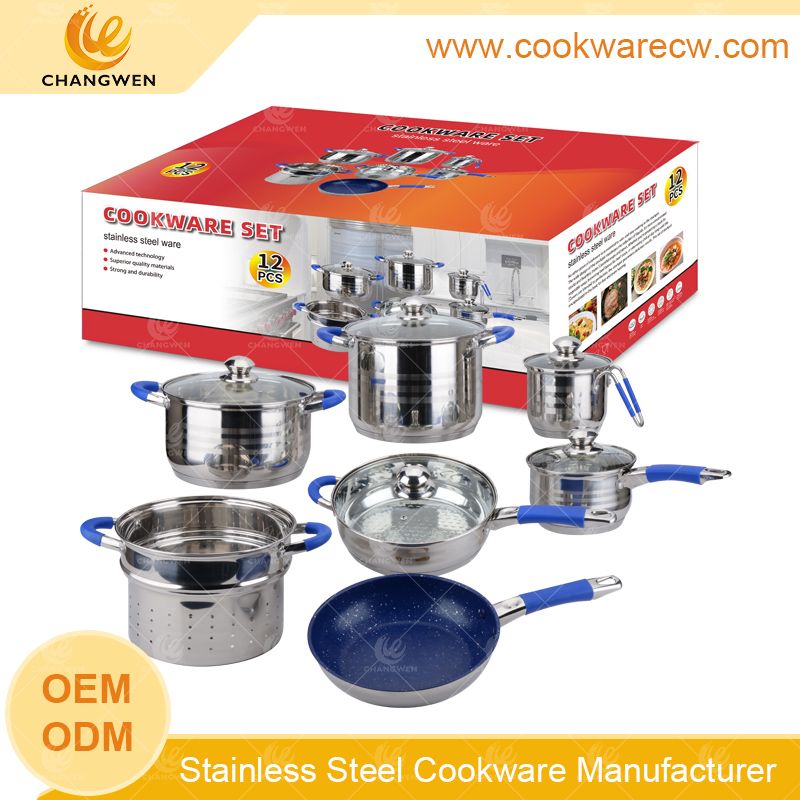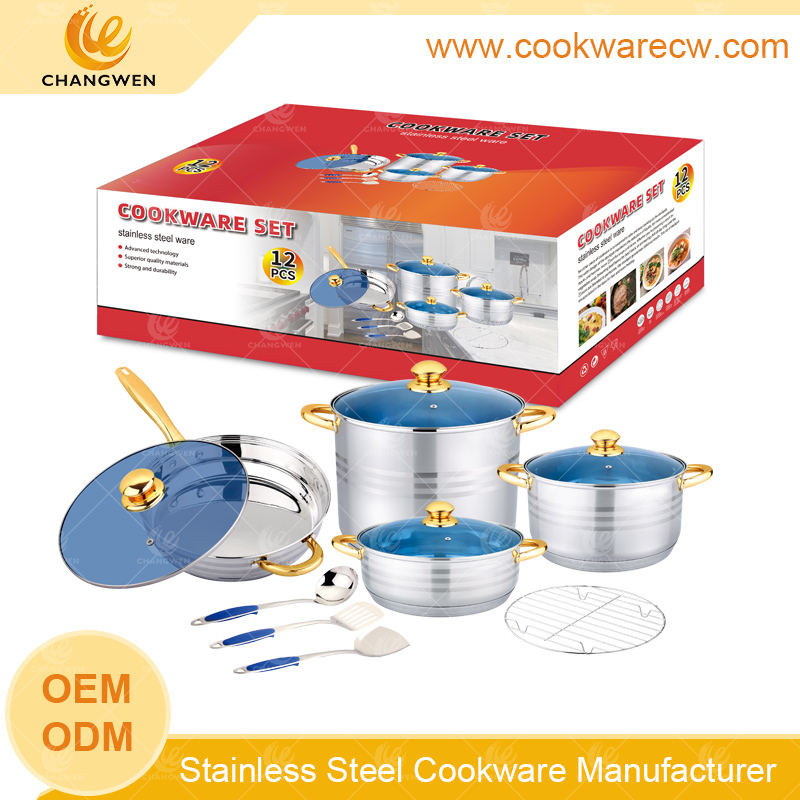Blog & News
We pay attention to the latest news on the product trend of kitchen utensils and continue to develop new products suitable for the market
What are the commonly used cooking utensils? Cookware manufacturers tell you
Views: 152 Author: China CHANGWEN Cookware Publish Time: 11/27/2023 Origin: https://www.cookwarecw.com
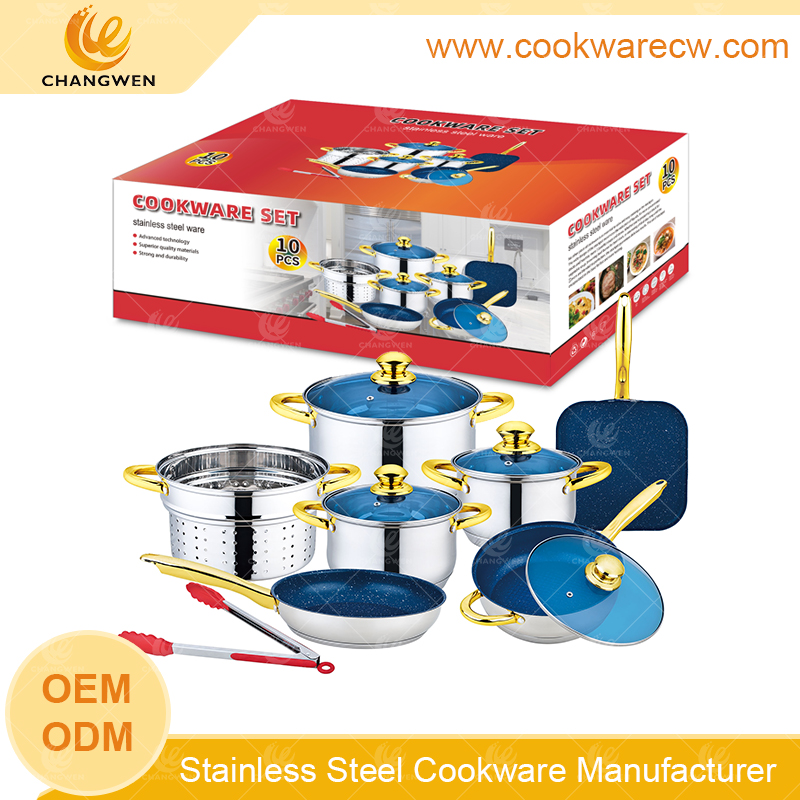
Cookware is an indispensable cooking tool in the kitchen. Among all kitchen utensils, cookware is the most important. With the development of technology and changes in demand, the types and functions of cooking utensils are also constantly being updated. Different families have different cooking methods and taste choices, and the ingredients and dishes they cook are also different, so when choosing the type of cooking utensils It’s not the same!
Soup Pot
A soup pot, also known as a stockpot or stew pot, is a versatile and essential kitchen tool specifically designed for preparing soups, stews, stocks, and large quantities of liquid-based dishes. This type of pot typically has a wide base and tall, straight sides to accommodate the simmering or boiling of liquids and the addition of various ingredients. Here’s an introduction to the soup pot:
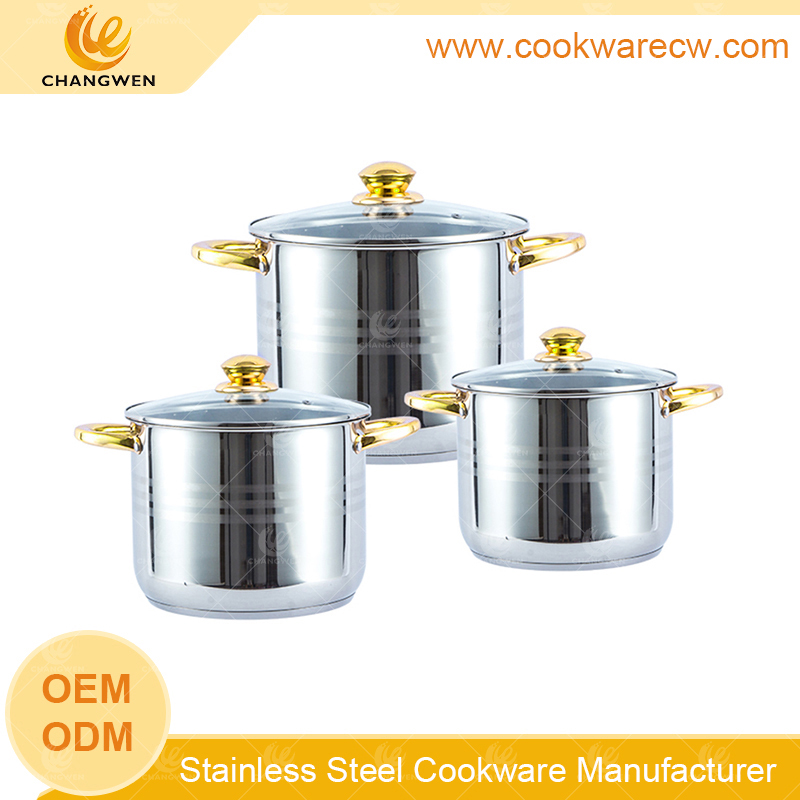
Design: Soup pots are characterized by their large capacity and sturdy construction. They are usually made from materials like stainless steel, aluminum, enamel-coated cast iron, or other heat-resistant materials. The choice of material can affect factors such as heat conductivity and durability.
Capacity: Soup pots come in various sizes, ranging from a few quarts to several gallons, to accommodate different cooking needs. The size you choose depends on the quantity of soup or stock you plan to prepare.
Shape: The pot’s shape, with a wide base and tall sides, facilitates even heating and allows for the submersion of ingredients in a liquid. This design is particularly useful when making large batches of soup or when simmering stocks for an extended period.
Lid: Soup pots typically come with a well-fitted lid. A tight-fitting lid helps to trap heat and moisture, which is crucial for simmering and stewing dishes. Some lids also have vents to allow steam to escape.
Handles: Sturdy handles on the soup pot and lid make it easier to lift and maneuver, especially when dealing with hot liquids. Some soup pots have handles that stay cool on the stovetop for added safety.
Versatility: While primarily designed for soups and stews, soup pots can be versatile in the kitchen. They are also suitable for boiling pasta, making chili, cooking large quantities of sauces, and preparing broth or stock.
Material Considerations: The choice of material for a soup pot can impact cooking performance. Stainless steel is durable and resistant to corrosion, while cast iron retains heat well. Some pots have an enamel coating on the interior for easy cleaning and resistance to acidic ingredients.
Cleaning and Maintenance: Many soup pots are dishwasher-safe, but it’s important to check the manufacturer’s instructions for care and maintenance. Some materials may require handwashing or specific cleaning methods.
Saucepan
A saucepan is a fundamental and versatile kitchen utensil used for a variety of cooking tasks. This essential piece of cookware is characterized by its deep, straight-sided design with a long handle and, often, a lid. Saucepans come in various sizes and are crafted from different materials, making them suitable for a wide range of cooking needs. Here’s an introduction to the saucepan:
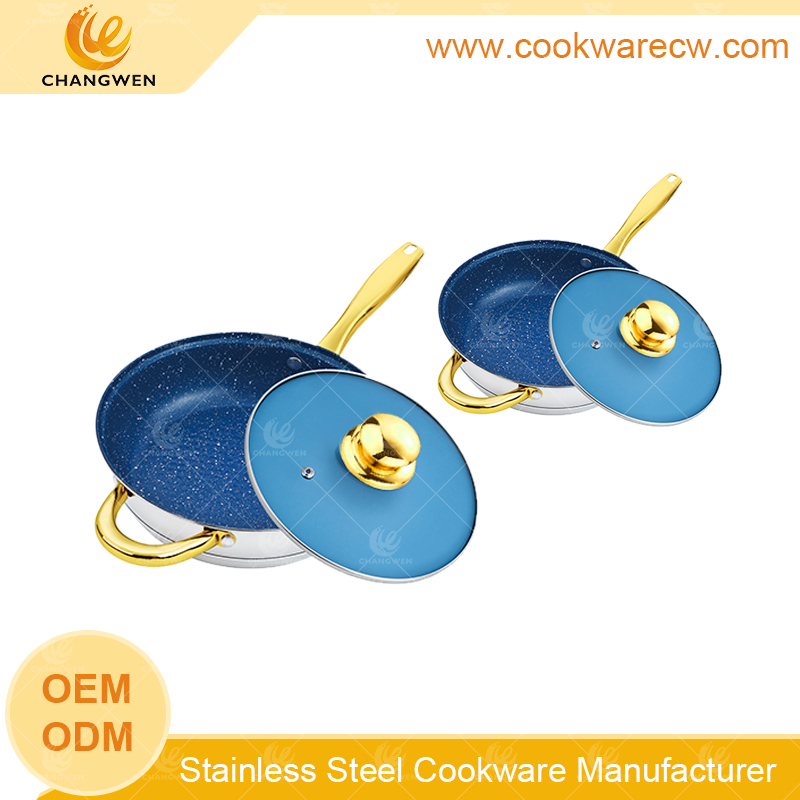
Design: Saucepans are designed with a deep body and straight sides, which helps in heating liquids quickly and evenly. The straight sides also make stirring and whisking easier, preventing spills over the edges.
Materials: Saucepans can be made from various materials, including stainless steel, aluminum, copper, and nonstick-coated metals. Each material has its own set of advantages, such as even heat distribution, durability, and ease of cleaning.
Size: Saucepans come in a range of sizes, typically measured in quarts or liters. Common sizes include 1-quart, 2-quart, and 3-quart saucepans. The choice of size depends on the quantity of food you are preparing.
Handle: A saucepan is equipped with a long handle, usually made of heat-resistant material, to provide a secure grip while cooking. Some saucepans also have a smaller “helper handle” opposite the main handle for added stability when lifting.
Lid: Many saucepans come with a matching lid, which is essential for trapping heat and steam during cooking. Lids may be made of the same material as the saucepan or include a heat-resistant handle.
Pouring Spout: Some saucepans have a built-in pouring spout on either side of the rim. This feature makes it convenient to pour liquids without dripping or spilling.
Versatility: Saucepans are versatile and can be used for a wide range of cooking tasks. They are ideal for heating sauces, boiling water, cooking grains, and making soups or stews. The smaller sizes are suitable for tasks like melting butter or reheating leftovers.
Induction Compatibility: Many modern saucepans are designed to be compatible with induction cooktops, providing an efficient and responsive cooking experience.
Maintenance: The maintenance of a saucepan depends on its material. Stainless steel and copper saucepans are often dishwasher-safe, while nonstick-coated pans may require gentle handwashing to preserve the nonstick coating.
Frypan
A frypan, also known as a skillet or frying pan, is a versatile and essential piece of cookware found in virtually every kitchen. This flat-bottomed pan features low, flared sides, a long handle, and sometimes a lid. It is primarily used for frying, sautéing, searing, and browning food. Here’s an introduction to the frypan:
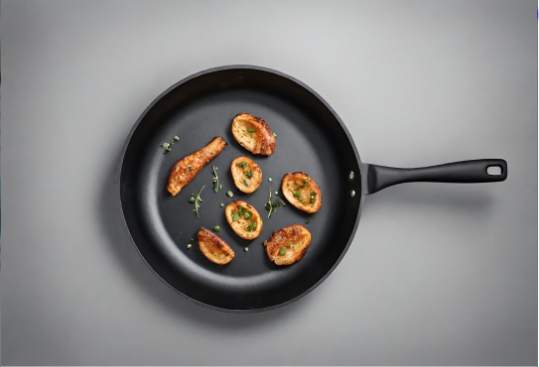
Design: Frypans have a wide, flat cooking surface with low, sloping sides. The design allows for efficient evaporation of moisture, making them ideal for cooking techniques that involve browning or searing.
Materials: Frypans can be made from various materials, including stainless steel, cast iron, aluminum, and nonstick-coated metals. Each material offers different benefits, such as even heat distribution, durability, and ease of cleaning.
Size: Frypans come in a range of sizes, measured in inches or centimeters across the diameter of the cooking surface. Common sizes include 8-inch, 10-inch, and 12-inch frypans. The choice of size depends on the quantity of food you are preparing.
Handle: A frypan is equipped with a long handle made of heat-resistant material, usually attached with rivets. Some models have an additional helper handle opposite the main handle, aiding in lifting and maneuvering the pan.
Lid: While not all frypans come with lids, some models include a matching lid. The lid helps retain heat and moisture during cooking, making it useful for certain recipes.
Nonstick Coating: Many modern frypans feature a nonstick coating on the cooking surface. This coating helps prevent food from sticking, making for easier cooking and cleaning. It’s important to use non-metal utensils with nonstick pans to avoid damaging the coating.
Versatility: Frypans are versatile and suitable for a variety of cooking techniques. They are excellent for frying eggs, searing meats, sautéing vegetables, and even cooking pancakes. The low sides make it easy to flip or stir food.
Induction Compatibility: Some frypans are designed to be compatible with induction cooktops, ensuring efficient and even heating.
Maintenance: The care and maintenance of a frypan depend on its material. Cast iron and some stainless steel pans may require seasoning, while nonstick pans need careful handling to preserve the coating.
Wok
A wok is a versatile and essential cooking utensil originating from Chinese cuisine, known for its unique shape and ability to handle a variety of cooking techniques. Traditionally used for stir-frying, a wok can also be employed for deep-frying, boiling, searing, and steaming. Here’s an introduction to the wok:

Design: The classic design of a wok features a deep, rounded bottom with high, sloping sides. This shape allows for efficient heat distribution, making it easy to cook different ingredients at varying temperatures.
Materials: Woks can be made from various materials, each with its own set of advantages. Traditional woks are often made of carbon steel, which is known for its durability and ability to develop a natural nonstick patina over time. Other materials include cast iron, stainless steel, and nonstick-coated surfaces.
Size: Woks come in different sizes, measured by their diameter. Common sizes range from 12 to 14 inches. The choice of size depends on the quantity of food you are preparing and the size of your stovetop burner.
Handle: Woks typically have a long handle on one side, making it easy to toss and stir ingredients. Some models also have a small, opposite handle, known as a helper handle, to aid in lifting and maneuvering the wok.
Lid: Many woks come with a domed lid, which is useful for retaining heat and steam during cooking. This feature is especially valuable for methods like steaming or simmering.
Versatility: Woks are incredibly versatile and can be used for a variety of cooking techniques. Stir-frying is the most well-known use, but a wok can also be used for deep-frying, boiling, braising, and even smoking.
Seasoning: Traditional carbon steel woks require seasoning before use to create a natural nonstick surface. This process involves coating the wok with oil and heating it to create a protective layer.
Wok Ring: To stabilize a round-bottomed wok on a Western-style stove, a wok ring is often used. This circular metal ring provides support for the wok while allowing heat to circulate underneath.
Cleaning: Proper care and cleaning of a wok depend on its material. Carbon steel woks should be seasoned and hand-washed, while other materials like stainless steel or nonstick-coated woks may be dishwasher-safe.
Steamer
A steamer is a kitchen appliance designed to cook food by using steam. Steaming is a gentle and healthy cooking method that helps retain the natural flavors, colors, and nutrients of food. Steamers come in various forms, from traditional bamboo steamers to electric steamers with multiple compartments. Here’s an introduction to steamers:
Bamboo Steamers: Traditional bamboo steamers consist of interlocking baskets made from bamboo or wood. They are commonly used in Asian cuisine for steaming dumplings, buns, and a variety of other foods. Bamboo steamers are placed over a wok or a pot of boiling water, allowing steam to circulate through the food.
Electric Steamers: Modern electric steamers are standalone appliances with multiple tiers or compartments. These steamers are convenient and versatile, allowing you to steam different types of food simultaneously. Electric steamers often come with preset cooking times and temperature controls, making the steaming process user-friendly.
Stovetop Steamer Inserts: Some cookware sets include steamer inserts designed to fit on top of pots or saucepans. These inserts typically have perforations to allow steam to pass through, making them suitable for steaming vegetables, fish, or dumplings on the stovetop.
Multi-Functional Steamers: Some electric steamers are designed to serve multiple functions, combining steaming with other cooking methods. They may include rice cookers, slow cookers, and even sauté functions, providing a versatile kitchen appliance for various cooking needs.
Health Benefits: Steaming is considered a healthier cooking method compared to methods like frying because it doesn’t require added fats or oils. It helps preserve the natural nutritional content of foods, making it an ideal choice for those looking to maintain a balanced and healthy diet.
Versatility: Steamers can be used for a wide range of foods, including vegetables, seafood, poultry, dumplings, and even desserts. Steaming is particularly well-suited for delicate foods that might break apart or lose their texture with other cooking methods.
Retained Moisture and Texture: Steaming helps foods retain their natural moisture, resulting in a moist and tender texture. It’s especially beneficial for preserving the quality of delicate ingredients.
Easy Cleanup: Steaming is a relatively clean cooking method, and many steamers have components that are dishwasher-safe, making cleanup a breeze.
Pressure Cooker
A pressure cooker is a versatile kitchen appliance that uses steam and high pressure to cook food quickly. This cooking method can significantly reduce cooking times compared to traditional methods, making pressure cookers popular for preparing a wide variety of dishes. Here’s an introduction to the pressure cooker:
Pressure Cooking Principle: Pressure cookers work by trapping steam generated during the cooking process, which increases the internal pressure. The elevated pressure raises the boiling point of water, allowing food to cook faster than conventional methods.
Construction: A typical pressure cooker consists of a sturdy pot with a tightly sealed lid and a pressure release valve. Some modern pressure cookers have additional features such as multiple pressure settings, built-in timers, and safety mechanisms.
Materials: Pressure cookers are commonly made from stainless steel or aluminum. Stainless steel models are durable and resist corrosion, while aluminum cookers are known for their lightweight nature.
Pressure Release Valve: The pressure release valve is a crucial safety feature. It allows excess steam to escape to maintain the desired pressure level. Some pressure cookers have a quick-release valve for rapidly depressurizing the cooker at the end of cooking.
Sealing Ring: The sealing ring is a rubber or silicone gasket that ensures an airtight seal when the lid is closed. This helps maintain the pressure inside the cooker during cooking.
Pressure Regulator: Modern pressure cookers often have a pressure regulator that allows users to select different pressure levels depending on the type of food being cooked.
Cooking Speed: One of the primary advantages of pressure cookers is their ability to cook food much faster than conventional methods. The high pressure accelerates the cooking process, making pressure cookers an efficient choice for busy individuals.
Energy Efficiency: Because pressure cookers cook food quickly and at higher temperatures, they are energy-efficient compared to longer cooking methods. This can result in lower energy consumption and reduced cooking costs over time.
Versatility: Pressure cookers are versatile appliances suitable for a wide range of dishes, including soups, stews, beans, grains, meats, and even desserts. Many models come with additional functions like sautéing or slow cooking.
Nutrient Retention: Pressure cooking can help retain more nutrients in food compared to other cooking methods due to the shorter cooking times and reduced exposure to high temperatures.
Safety Measures: Modern pressure cookers are equipped with safety features to prevent accidents. These may include locking mechanisms, pressure indicators, and automatic shut-off systems.
Summarize
Through the above introduction, I believe you have an accurate understanding of the types of cookware. There are also some other relatively niche cooking utensils, which we will introduce in the next issue.
Changwen Kitchenware has developed and launched many types of cookware, including the above types, for consumers in Europe, South America, North America, and Southeast Asia. No matter what kind of dishes you cook, you should choose the corresponding cooking utensils and the right pot, so that we and our family can enjoy delicious food and health, and enjoy a new taste of life.
Latest News
- What is Surgical Stainless Steel Cookware?
- What is 18/10 Stainless Steel Cookware?
- The Ultimate Guide: Where to Buy Large Stainless Steel Steamers
- Stainless Steel Cookware Manufacturers
- Cast Iron Cookware Manufacturers
- How much does a three-layer steamer cost and how to choose one?
- What Materials are Used in Frying Pans, and Which are Good?
- What material is good for stainless steel frying pan?
- Features of Capsule Bottom Stainless Steel Cookware
- What is the difference between stainless steel 18/8, 18/10, 304, and 306
- The Most Important Step in the Nonstick Frying Pan Manufacturing Process
- where is stainless steel frying pan manufactured
- Explore the Differences Between Cheap and Expensive Stainless Steel Cookware
- Advantages and Disadvantages of Chinese Cookware
- Why choose 180/8 material for stainless steel cookware?
- What are the purchasing channels for cookware in Mexico?
- Opening a cookware store in Mexico, how to purchase goods
- Why choose stainless steel cookware when exporting to Mexico?
- A Deep Dive into Stainless Steel Cookware: Comparing 304, 316, 430 and Three-layer Stainless Steel Pots
- A Comprehensive Guide to Cookware Materials and Their Pros and Cons
 English
English Español
Español Português
Português
